The Holbrook Explorer
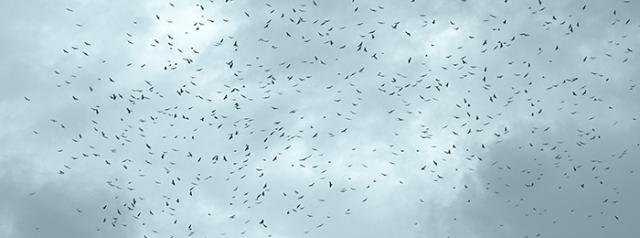
Back from the Field: Tracking the "River of Raptors" in Costa Rica
Back from the Field: Tracking the "River of Raptors" in Costa Rica
“It’s often called the River of Raptors because the sky is completely black with birds. It’s unbelievable how many birds you see,” recounted Debbie Jordan, Holbrook Ambassador, after witnessing the hawk migration in Costa Rica on her recent trip with Hawk Ridge Bird Observatory.
Debbie and her travel companions set out in October, the prime time to experience high counts of migrating species like the Broad-winged Hawk, Peregrine Falcon, Turkey and Black Vultures, Swainson’s and Short-tailed Hawks, and more as they make their way from North to South America.
The main focus of this trip was to learn about the hawk migration in Costa Rica and international efforts to protect raptors by collecting data during their fall migration. Raptors are bio indicators, meaning they provide clues about the health of their ecosystems.
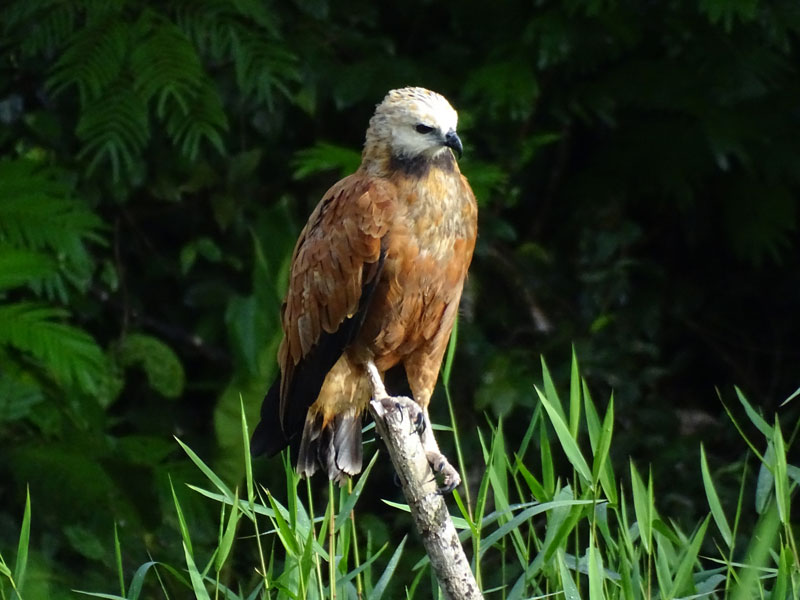 Black-collared Hawk
Black-collared Hawk
Raptors usually sit at the top of the food web and as a result are highly vulnerable to changes in their environment such as decreases in the populations of insects, mammals, small birds, fish, and increases in contaminants and other environmental conditions. The information gathered through hawkwatching enables scientists to better understand the conservation needs of raptor populations and proactively protect these incredible birds as well as other wildlife and humans that share habitats with them.
After arriving in Costa Rica and spending their first night in San Jose, the group traveled by bus and boat to Tortuguero on the Caribbean coast. However, Debbie remembers there was an unexpected hiccup when they met with their guide in the morning.
“We were getting ready to leave the hotel in the morning and Mario (our expert birding guide) says, I think we have a problem,” Debbie recalled. A heavy overnight rain had washed out the road on the route they planned to take. Because of this, they took a detour over the mountains near La Paz Waterfall which allowed for some time at a birding location along the way. “Even though it put us behind schedule, it was kind of a bonus because we got to go to Cinchona which is a really wonderful place to bird watch,” said Debbie.
 Collared Aracari
Collared Aracari
At another point on their journey to Tortuguero, the group reached lowlands surrounded by banana fields and witnessed a surprise crossing.
“We’re going along this dirt road and all of a sudden sirens start going off,” Debbie said. “A barricade goes down like it’s a train crossing. We waited and watched while many stalks passed in front of the bus on the conveyor belt.”
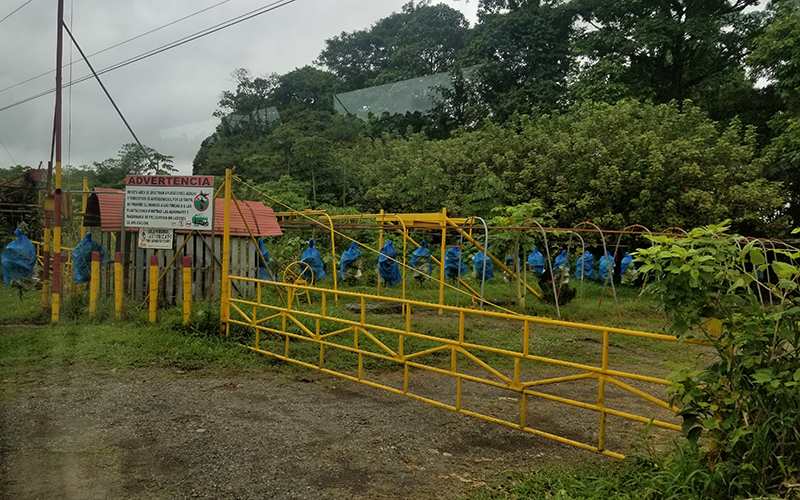 Banana Crossing
Banana Crossing
After the banana crossing, the group reached the boat that would take them to Tortuguero. The boat rides in Tortuguero were a highlight of the trip, Debbie recalled. “That is a place to see so much wildlife. And because you’re in a boat you can get pretty close to them.” Birds, otters, crocodiles, and caimans were among the wildlife they floated by.
The next stop was the Sea Turtle Conservancy. Here, the travelers learned about the history of sea turtle research in Tortuguero, which is one of the most important sea turtle nesting sites in the world. At dusk, they walked down to the beach and witnessed a beautiful moment – the hatching of green sea turtles.
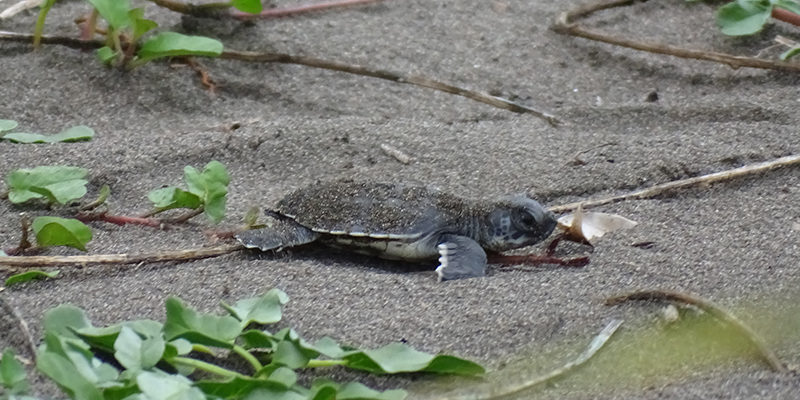 Green sea turtle hatchling
Green sea turtle hatchling
Now it was time for the first hawkwatch visit. Debbie and her companions made their way to Kèköldi Indigenous Reserve, the second largest hawkwatch in the Americas and an ideal location to observe the annual migration of raptors.
“The mountains in Costa Rica create a natural funnel for the birds after they come south through Mexico and Nicaragua,” Debbie described. “When they get to Costa Rica, there are mountains on their right and ocean to their left, so they have to go through this narrow strip in the Caribbean foothills.”
Kèköldi HawkWatch began operating in 2000. In their last official season, they counted more than 3 million birds of 17 different species.
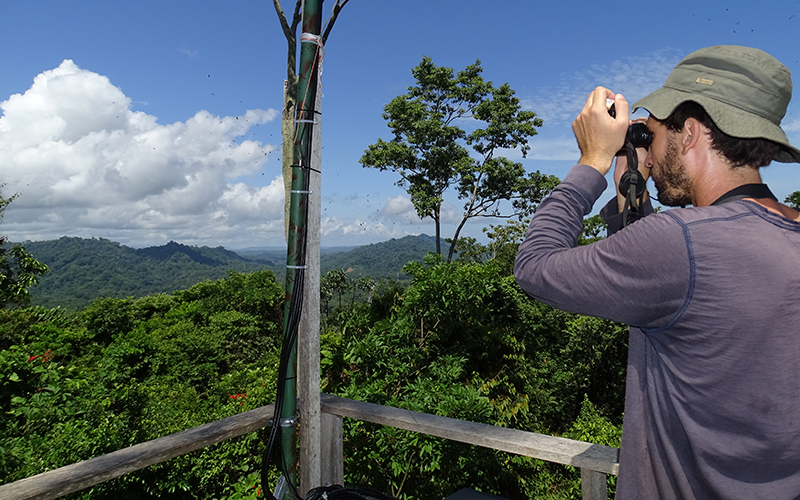 View from Kèköldi Tower
View from Kèköldi Tower
Debbie and her group climbed uphill for over an hour and then multiple flights of stairs to reach the top of the observation tower where hawkwatch counters stood at each quadrant holding clickers. Soft click, click, click repetitions were the soundtrack as they counted the raptors flying overhead.
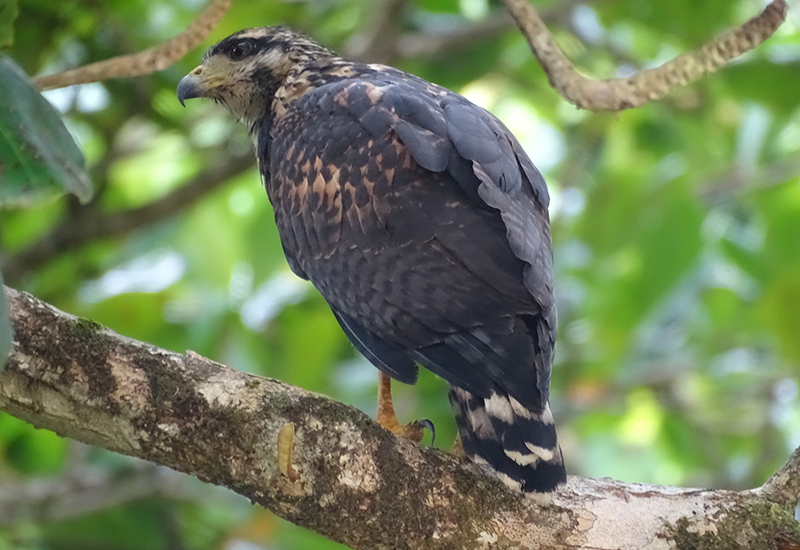 View from Kèköldi HawkWatch Tower
View from Kèköldi HawkWatch Tower
In the midst of the large kettles of birds flying past, one specific raptor stood out. “It was a Broad-winged Hawk, normally mostly brown,” Debbie said, “this bird was completely white, except for just a little bit of brown on its tail.” This is called leucism, a condition where a bird doesn’t develop pigment in its feathers.
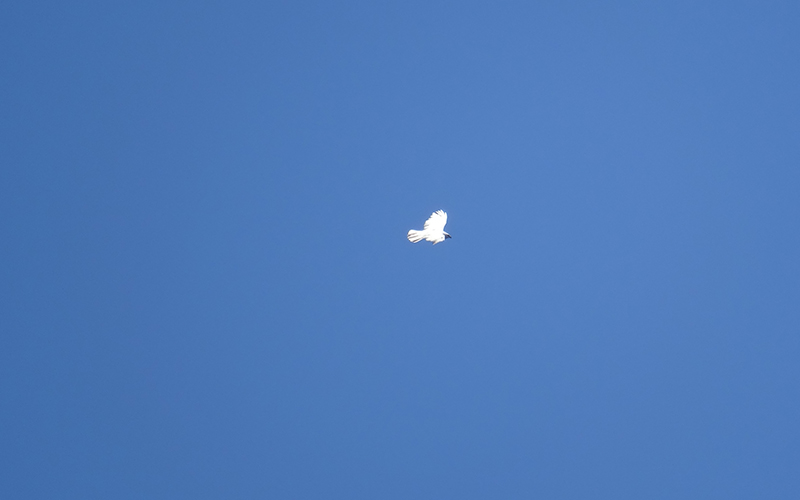 Broad-winged Hawk with leucism
Broad-winged Hawk with leucism
The next day, the group drove to Selva Verde Lodge in Sarapiqui and later visited the world-famous Organization for Tropical Studies La Selva Biological Station, home to a large assortment of wildlife. “I call it the Disneyland of Costa Rica,” Debbie said, “because there are just so many animals.”
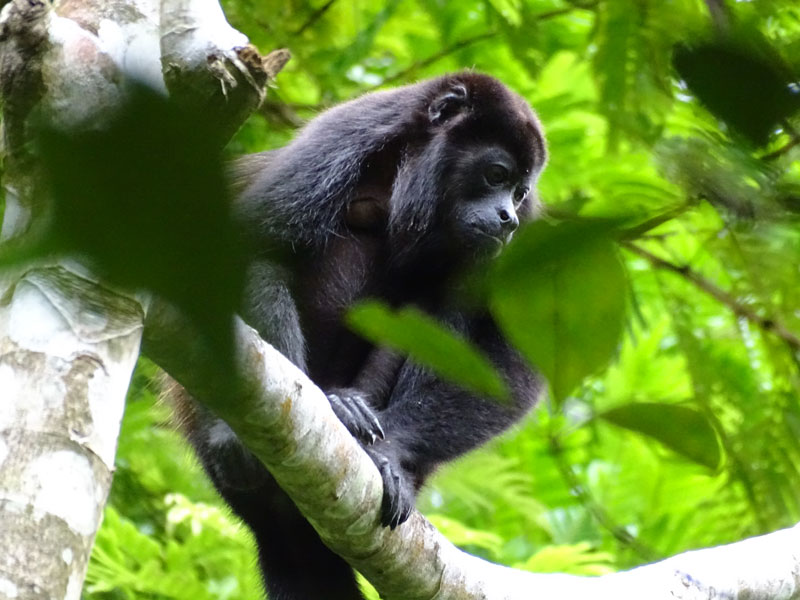 Mantled howler monkey
Mantled howler monkey
An important bird in the Sarapiqui region is the endangered Great Green Macaw, a species that seems to be recovering after many years of hard work. Alex Martinez, who is closely involved with this undertaking, took the group to visit protected nesting sites.
“Some people wrote that that was their favorite part of the trip,” Debbie said, “you know, when you get to meet people that are so passionate about the work they’ve been doing.” Alex is a prime example of this as he has spent much of his life helping the Great Green Macaw population recover.
The adventure was topped off with a second hawkwatch down the road from Selva Verde Lodge at EcoVida HawkWatch Tower. Here, travelers learned more about the project, counting methodology, silhouette identification, and more.
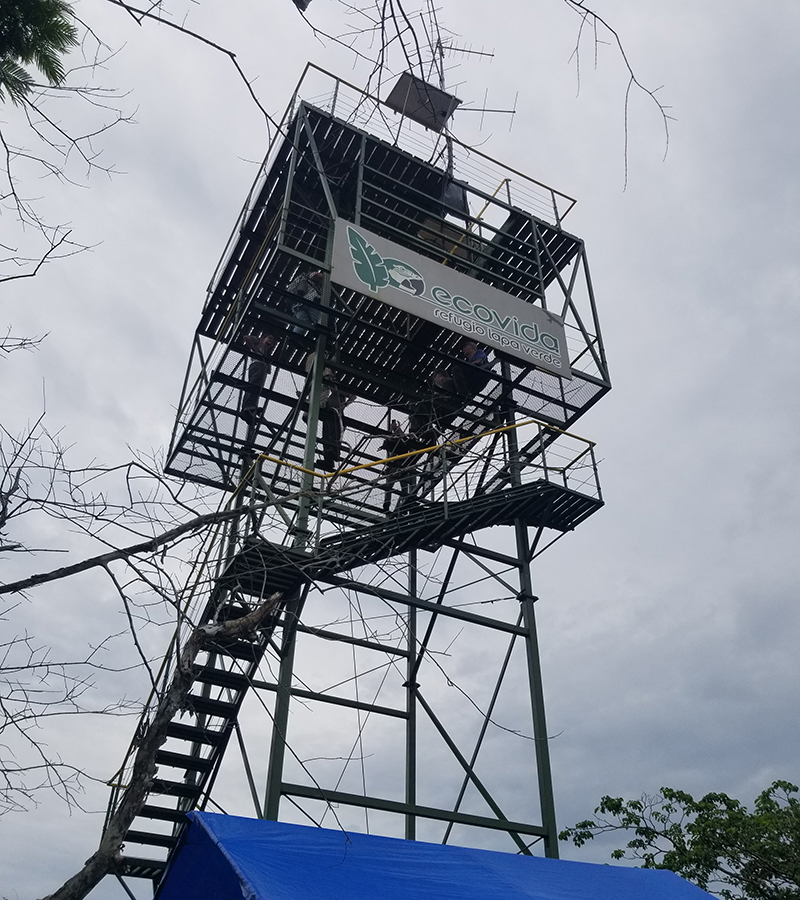 EcoVida HawkWatch Tower
EcoVida HawkWatch Tower
For anyone interested in seeing the raptor migration next year, Debbie advises travelers be aware that some aspects such as the hikes to the towers and the climb up the stairs are physically demanding. The heat and humidity can be intense and staying hydrated is crucial.
The fall hawk migration season lasts from mid-August through mid-December and the spring migration stretches from April to mid-May. Stay tuned for future opportunities to travel to the ideal locations for witnessing the River of Raptors.

